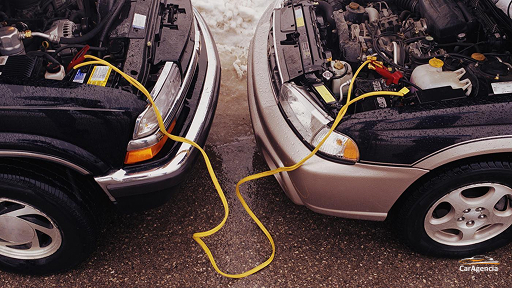 Kiran C
Kiran C
Getting stranded with a dead car battery is never fun, but knowing how to jump start your car can save the day. Whether you're facing a cold winter morning or forgot to turn off your headlights, these straightforward methods will get you back on the road quickly and safely.
Jump starting a car is a simple process, but understanding why batteries die helps prevent future problems. Common culprits include leaving lights on overnight, extreme weather conditions, or natural battery wear. Your alternator typically charges the battery while driving, so if it's failing, you might face repeated dead battery situations.
This traditional method requires finding a helpful driver with a working vehicle.
Quality jumper cables (8-10 gauge for small cars, 6 gauge for midsize, 4 gauge for large vehicles)
A second vehicle with a working battery
Preparation Phase:
Position the working vehicle close enough for cables to reach both batteries
Turn off both vehicles completely, including lights and accessories
Open both hoods and locate the batteries
Cable Connection:
Connect the red positive clamp to the dead battery's positive terminal first
Attach the other red clamp to the working vehicle's positive terminal
Connect the black negative clamp to the working battery
Attach the final black clamp to an unpainted metal surface under the hood of the dead vehicle (not the negative terminal)
Starting Process:
Start the working vehicle and let it run for several minutes. Rev the engine slightly to boost power flow to the dead battery. The dashboard lights of the dead vehicle should illuminate, indicating power transfer.
Attempt to start the dead vehicle. If successful, let both cars run for a few minutes before disconnecting cables. Remove cables in reverse order of installation.
Portable jump starters offer independence and convenience without requiring another vehicle.
Fully charged portable jump starter
Built-in cables (usually included)
Preparation:
Ensure your jump starter is fully charged before emergencies arise. Most units require minimum battery levels to function effectively.
Connection Process:
Open your vehicle's hood and locate the battery
Connect the jump starter's red clamp to the positive terminal
Attach the black clamp to the negative terminal
Turn on the jump starter according to manufacturer instructions
Starting Your Vehicle:
Attempt to start your car immediately after connecting. If successful, let the engine run for several minutes before disconnecting the jump starter. If unsuccessful, wait a few minutes and try again.
Safety First:
Never let cable clamps touch each other during the process
Avoid smoking or creating sparks near batteries
Wear safety glasses if available
Check for battery damage or leaks before proceeding
When Jump Starting Fails:
If your car won't start after multiple attempts, the problem might extend beyond a simple dead battery. Possible issues include:
Complete battery failure requiring replacement
Faulty alternator not charging the battery
Starter motor problems
Corroded battery terminals
Jumper Cable Selection:
Wire gauge determines power transfer capability. Thicker cables (lower gauge numbers) work better for larger engines. Ensure cables are long enough to reach between vehicles comfortably.
Portable Jump Starter Features:
Modern jump starters often include USB ports, flashlights, and air compressors. Choose units with sufficient cranking amps for your vehicle's engine size.
Regular battery maintenance prevents unexpected failures. Clean terminals monthly, test battery voltage seasonally, and replace batteries showing signs of weakness. Cold weather significantly reduces battery capacity, so consider battery heaters in extreme climates.
Jump starting your car doesn't require mechanical expertise, just careful attention to proper procedures. Keep quality jumper cables or a portable jump starter in your vehicle, and you'll never be stranded by a dead battery again.